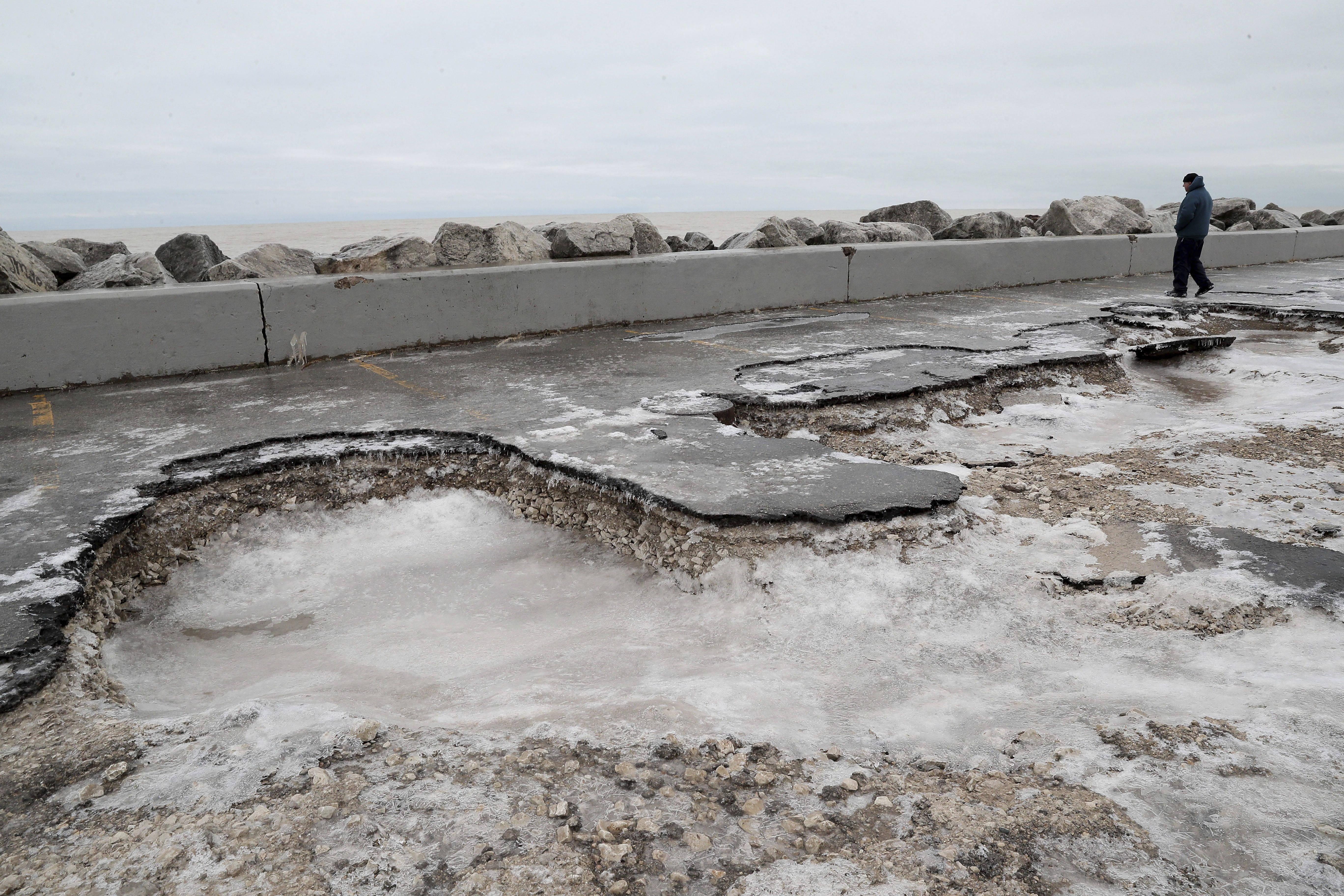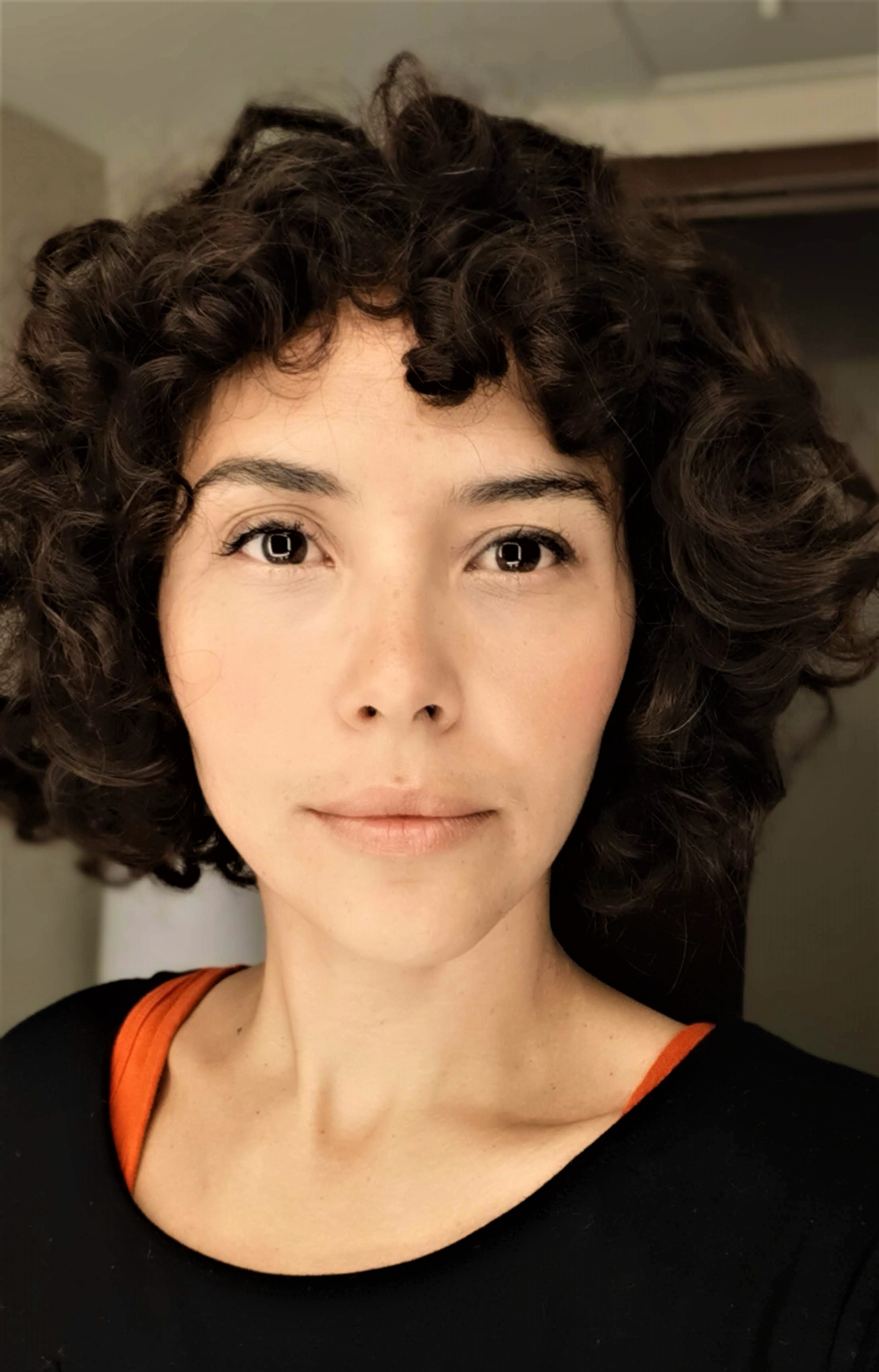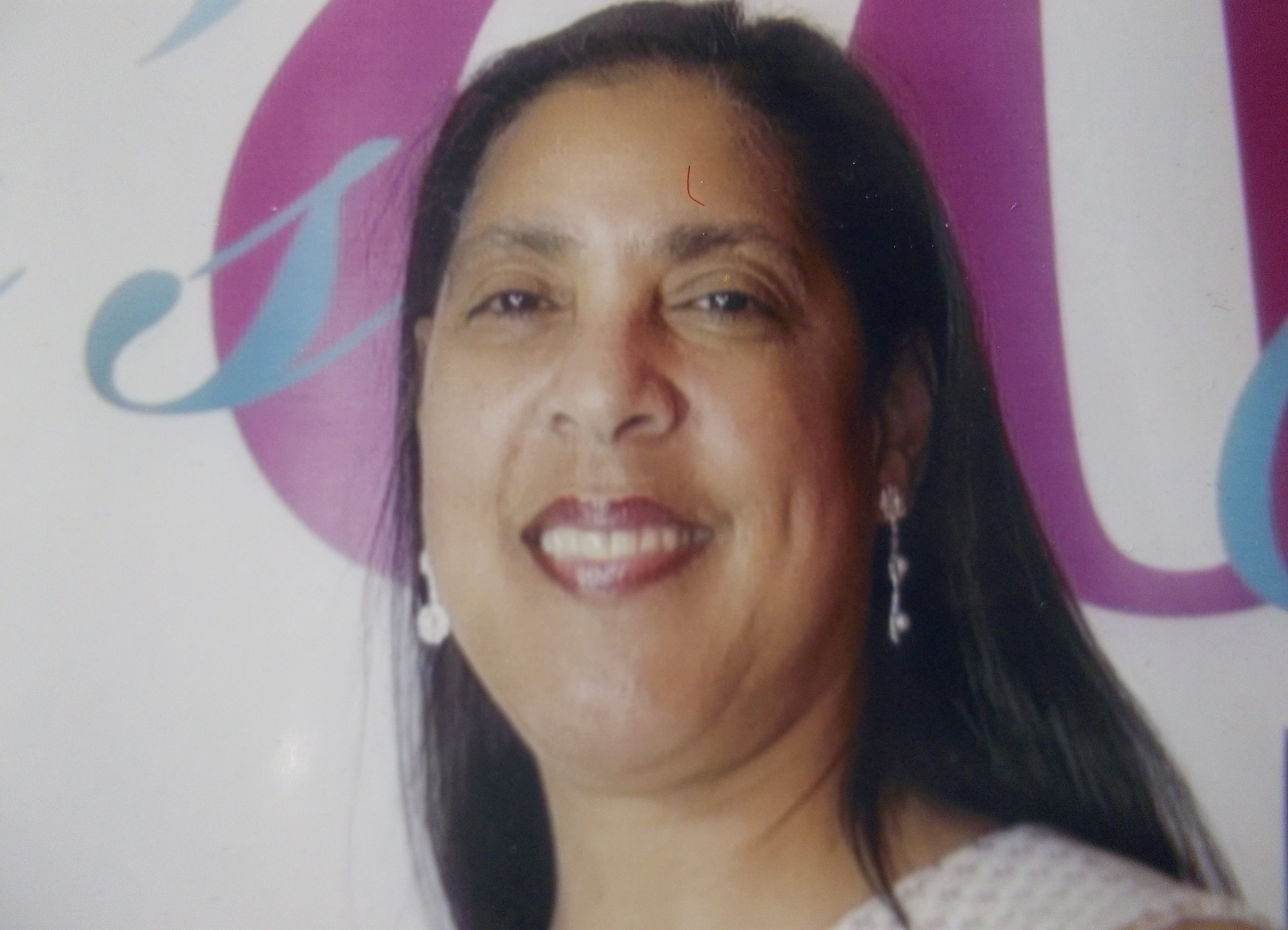
Alongside the illnesses, deaths and closures caused by COVID-19, the threat of climate change still hangs over communities across the Great Lakes region and around the world. And the people and organizations fighting against climate change and for environmental justice have found themselves caught between these two threats to public health.
The unequal impacts of both crises were a major concern raised by Wisconsin residents in listening sessions for the Governor’s Task Force on Climate Change, according to Lt. Gov. Mandela Barnes, who chairs the task force.
“Both have caused insurmountable negative health outcomes in communities, and environmental injustice led to harsher impacts of climate change and harsher impacts of COVID-19 in the same communities,” Barnes said. “Given those disparate impacts and the heightened impact on lower income and communities of color, one of the bigger suggestions was for our state to create an office of environmental justice.”

Michelle Martinez, statewide coordinator for the Michigan Environmental Justice Coalition (Photo courtesy of Michelle Martinez)
Michelle Martinez, the statewide coordinator for the Michigan Environmental Justice Coalition, also affirms the link between the crises. She warns that many of the problems this region faces under COVID-19 are likely to reappear and worsen as the direct impacts of climate change increase.
“We need to be acting like the climate crisis is happening right now,” Martinez said. “Because COVID can be seen as one of the first indicators of a climate crisis. Now, add a superstorm and add the power outages from DTE, add people losing fridges full of food or medicine, add kids not going to online school because they can’t afford their energy, all of those things are multiplier effects that we still don’t have the solution to.”
Theresa Landrum, a Detroit environmental justice advocate who has long fought against toxic pollution in her neighborhood, the 48217 ZIP code known as the most polluted area in the state of Michigan, has seen these intertwined impacts in her own community. Coal-fired power plants and a large oil refinery are just a few of the facilities pumping toxic chemicals into the air in her neighborhood, which is especially harmful when people are also fighting against an airborne disease.
“You can’t go out and breathe in air,” Landrum said, “And then they’re telling you don’t put on the air conditioning because the air conditioning is bringing in COVID and spreading COVID. So where do you turn?”
The bigger picture of climate justice
For some, even framing the issue as two separate crises is misleading — the current pandemic is a part of broader environmental justice issues that climate advocates are already working on.
The greater frequency of climate disruptions the world is expected to face is tied to the same problems as COVID-19, Martinez said. Flooding, extreme weather, heat, polar vortexes and even future pandemics involve the same issues of access to health care, connectivity, food and life-saving services.
“Climate change is not just about carbon dioxide,” Martinez said. “Climate change is about what happens when the local grocer closes and you don’t have access to InstaCart. What happens when we have a pandemic and folks can’t leave their home because they’re homebound? How do they get food, medicine, how do they stay connected to their neighbors? Climate change is a much, much bigger problem than just carbon dioxide.”
The solutions are also the same, according to Martinez, who emphasized the importance of community direct investment — the need for the federal, state and local government to provide investments right to families to buy food, pay rent, pay their bills and send their kids to school or keep them home to keep them safe.
“When we talk about building a climate future, we need to address both racism and economic injustice,” Martinez said. “It’s not pivoting from climate to COVID-19, it’s zooming out from carbon dioxide to climate justice.”
Accessibility in virtual spaces
But COVID-19 has made climate justice work more challenging, as environmental organizations switched to virtual spaces.
In Wisconsin, the Governor’s Task Force on Climate Change was established in October 2019 with the aim of bringing together people from different areas of expertise and collecting public ideas and concerns to propose recommendations for what the state can do next to address climate change. But when scheduled meetings and listening sessions landed in the middle of COVID-19, the task force had to switch strategies for connecting with the public.

Wisconsin Lieutenant Governor Mandela Barnes
Instead of holding in-person meetings, the task force had its public listening sessions in late June and early July over Zoom and also gave members of the public a chance to submit additional questions and comments through an online form.
For some people, the virtual meetings made it easier to have their voice heard.
“I would start out every meeting apologizing about not getting to meet in person, but we would get little notes on the side from people who are welcoming this sort of process because they didn’t have to leave the house and take as much time out of their day to attend a meeting like this,” Barnes said. “It gave flexibility to people who have new expectations in their lives or added responsibilities, like taking care of children who aren’t able to get into a childcare provider facility in this moment.”
But while sharing their concerns about climate change from home was helpful for many, virtual meetings about environmental issues can also prevent people from speaking up.
Theresa Landrum sits on a community advisory panel for Marathon Petroleum, whose Detroit oil refinery recently agreed to a penalty of $81,853 for violations of air quality rules in the past three years. But the virtual technology that Marathon uses to share information is inaccessible to many of the people most affected by their emissions.

Theresa Landrum (Photo courtesy of Theresa Landrum)
“We have many people that don’t have computer access. They don’t have Internet,” Landrum said. “And all these Zooms and phone calls are long distance — a lot of people here don’t have long distance telephone. People are trying to maintain bills, and if you’ve got a senior citizen on a limited income, they’re going to let people call them, rather than them calling us, because it would increase their phone bill.”
And even for those who do have some access to platforms like Zoom, spotty Internet or technical difficulties can still shut them out of the conversation.
“Sometimes Zoom works and sometimes it doesn’t. If you’re a person who cannot get Zoom to work properly, you’re on the phone,” Landrum said.
Being on the phone means not seeing the slides Marathon presents, including charts about emissions reductions. Without seeing the details, it’s harder for community members to ask specific follow-up questions that hold the company accountable.
“All you can do is listen to a summary of the visual that they have on the screen,” Landrum said.
Alexis Blizman, legislative and policy director at the Ecology Center, an environmental organization based in Ann Arbor, Michigan, agreed that participation in these more technical environmental spaces is harder for many during COVID-19.
“We had spent a lot of time over the last few years really trying to get folks who are members of impacted communities to be more involved in things like the Public Service Commission,” Blizman said. “And that was challenging to begin with because it’s an arena that tends to be pretty technical. There had been a decent buildup of interest, especially in Detroit, really due to the hard work of environmental justice advocates.”
The Ecology Center is part of a coalition called Work For Me DTE, which is trying to get current customers of DTE involved in cases that have direct impact on affordability as well as air quality in their homes. But the technology barriers to accessing online meetings, in addition to the health and financial struggles people are facing during COVID-19, have hurt public participation.
Landrum is also concerned about access to translation in virtual meetings.
“When we have a company that is asking for a permit to increase pollution or to alter a piece of equipment or decommission a piece of equipment or change their pollution output, you can have a public hearing,” Landrum said. “And if you have a virtual hearing and you’ve got someone who speaks nothing but Arabic, they’ve got to have somebody to translate it to them.” When translators aren’t available or are in other meetings, people in the community are shut out of the process.
“It’s very difficult now,” Landrum said. “For a community to have a seat at the table, to talk about climate change and about climate impacts is hard.”
The challenges of community organizing
As they confront the challenges of virtual spaces, the loss of in-person meetings has hit environmental advocates hard.
Before the pandemic, Landrum was used to gathering crowds of people. If Marathon had an emission that threatened the community, “at a moment’s notice, you could organize some kind of event, like a press conference or a protest,” Landrum said. “You cannot do that with this present COVID situation without jeopardizing someone’s health.”
The Michigan Environmental Justice Coalition similarly relied on those in-person connections.
“Pre-COVID, we were going to block club meetings, hosting community events, having community education dinners in the neighborhood of southwest Detroit,” Martinez said. “All of that went out the window.”
The MEJC stopped their in-person programming completely to reduce exposure, especially since the communities they work with are so vulnerable to the COVID-19 crisis and face barriers to receiving testing and adequate healthcare. But the loss of those in-person meetings was the loss of the heart of MEJC’s work.
“Trust is absolutely the most important thing with environmental justice communities,” Martinez said. “We take building relationships really seriously, so the in-person and one-on-one interactions were 90% of what we did.”
Losing in-person meetings has also meant losing the energy of collaborating and generating ideas in those spaces. Barnes compared the task force to his experiences in the state legislature, where most of the work happens in sidebar conversations, in the hallways or popping into someone’s office.
“A lot of that camaraderie that builds in these sort of meetings and these sort of chats is going to be lost,” Barnes said. That camaraderie and connection helps generate creative ideas and is especially important when bringing together people from diverse walks of life, including those who have traditionally been at odds with each other.
And even when in-person gatherings are possible — outdoors with masks and social distancing — Landrum has seen that they aren’t the same. If people are spaced out around a press conference, that distance makes it harder to hear the speaker, ask questions and get answers. And concerns about catching the virus prompt many people to just stay home. Press conferences that once attracted a couple hundred now might barely see fifty people show up, Landrum said.
“What’s going to be real hard is when the winter months come,” Landrum added. “At least now people are taking the chance and are doing things in a park or in another area where you have space. But in the winter, you can’t do that, you can’t organize.”
Shifting focus
Faced with these barriers to their usual work, some organizations adapted their priorities to suit the needs of the time.
As COVID-19 hit the Detroit community, the MEJC expanded beyond their traditional fight against toxics and air pollution to set up the infrastructure for mutual aid.
“We joined a coalition of community members who have been putting forth every effort to raise funds to deliver food to people who need food, to deliver diapers to parents and caregivers who need diapers, to provide direct cash assistance to residents,” Martinez said.
MEJC raised over $75,000 to support community members who couldn’t wait for their $1,200 stimulus checks or who didn’t have access to that check. They looked at the immediate needs of the community and worked to provide the necessary support that people were asking for.
The Ecology Center also shifted its energy priorities to adapt to the pandemic. While the organization had worked on affordability issues before, they became a major focus during COVID-19 as Michigan residents faced the risk of energy shutoffs.
“Whereas I was working a lot on energy efficiency in low-income communities and households, we’ve now switched some of the focus to how to deal with these arrearages that are building up while the moratoriums on energy shutoffs are in place,” Blizman said. “And the moratoriums the utilities put in place were only voluntary, and so now we have the potential of seeing mass shutoffs in the near future.”
The affordability and energy efficiency issues are related, and dealing with energy efficiency is still crucial, especially with people spending more time in the home, Blizman added. The Ecology Center works to help people receive the necessary health and safety repairs in their homes that allow them to make energy efficiency upgrades, and that whole process improves air quality.
Depending on the type of climate change work, pivoting wasn’t always necessary. Wisconsin’s climate task force was set up to respond to new ideas and information from both members and the public, and the COVID-19 crisis didn’t change that approach.
Getting as much public input as possible before putting forth task force recommendations was always the plan, Barnes explained, so overlapping concerns between COVID-19 and climate change didn’t change the task force’s approach — they were just another part of hearing and responding to the people of Wisconsin.
“We wanted the table to be open to anything,” Barnes said. “We did our own research as far as things we’ve come across, things that have been talked about for a while, but we wanted to start with a blank slate.”
Read more news about climate change and climate justice on Great Lakes Now:
Demanding Justice: Detroit activists make formal complaint over hazardous waste sites
Across America, Five Communities in Search of Environmental Justice
Survey analysis finds race plays role in perception, vulnerabilities to climate change in Indiana
One key solution to the world’s climate woes? Canada’s natural landscapes
Midland Flooding: Climate change and rains exacerbate dam infrastructure issues
API key not valid. Please pass a valid API key.Featured image: High winds from the recent storms pushed water ashore doing damage to the pavement at the McKinley Marina boat launch along Milwaukee’s lakefront Sunday, Jan. 12, 2020. (Michael Sears/Milwaukee Journal-Sentinel via AP)




